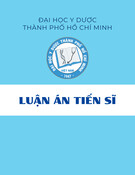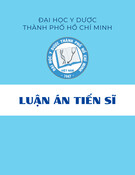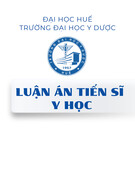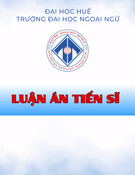iii
ABSTRACT
Bien Hoa airbase is one of the hot spots of dioxin–contaminated areas by the
war between Vietnam and the USA. On the other hand, Bien Hoa airbase, which is
located in the Northernwest of Bien Hoa city, was known as a densely populated area
and has the Dong Nai river system. Moreover, Bien Hoa City has one of the highest
population densities of the provincial cities in Vietnam (the Department of Statistics,
2022). Hence, the situation of dioxin–contaminated soils in Bien Hoa airbase directly
affected the environment, the ecosystem, and human health. So, how does pollution
directly affect ecosystems, the environment and human health? The thesis elucidates
the character of the dioxin-contaminated soils based on the concentration of dioxin
and heavy metals and also elucidates the efficiency of using Vetiver grass to remove
dioxins and heavy metals in soils which were collected to the experimental outdoors
at a depth of 50 cm, specifically following two dissertation hypothesis:
Dissertation hypothesis 1: Dioxin-contaminated soil in Pacer Iy area, Bien
airbase, which was approximately the level dioxin of the standard or higher
than the criteria by recommended Vietnam and International organizations, is
sand loam. In addition, some heavy metals have also accumulated in the soil
in this area (Cd, Cr, Cu, Ni, Pb, and Zn). The accumulation of cadmium in the
soil is especially high and exceeds many times the standards of Vietnam as
well as the standards of international.
Dissertation hypothesis 2: Vetiver grass has mitigated effectively dioxin
throughout experimental time, especially since the concentration of dioxins
has gone down to 23.4% in the first year of growth. Besides, some heavy
metals such as Cd, and Zn in dioxin-contaminated soil in the study area (Pacer
Ivy, Bien Hoa airbase, Dong Nai province) also have been remediated over
time by Vetiver grass.


























